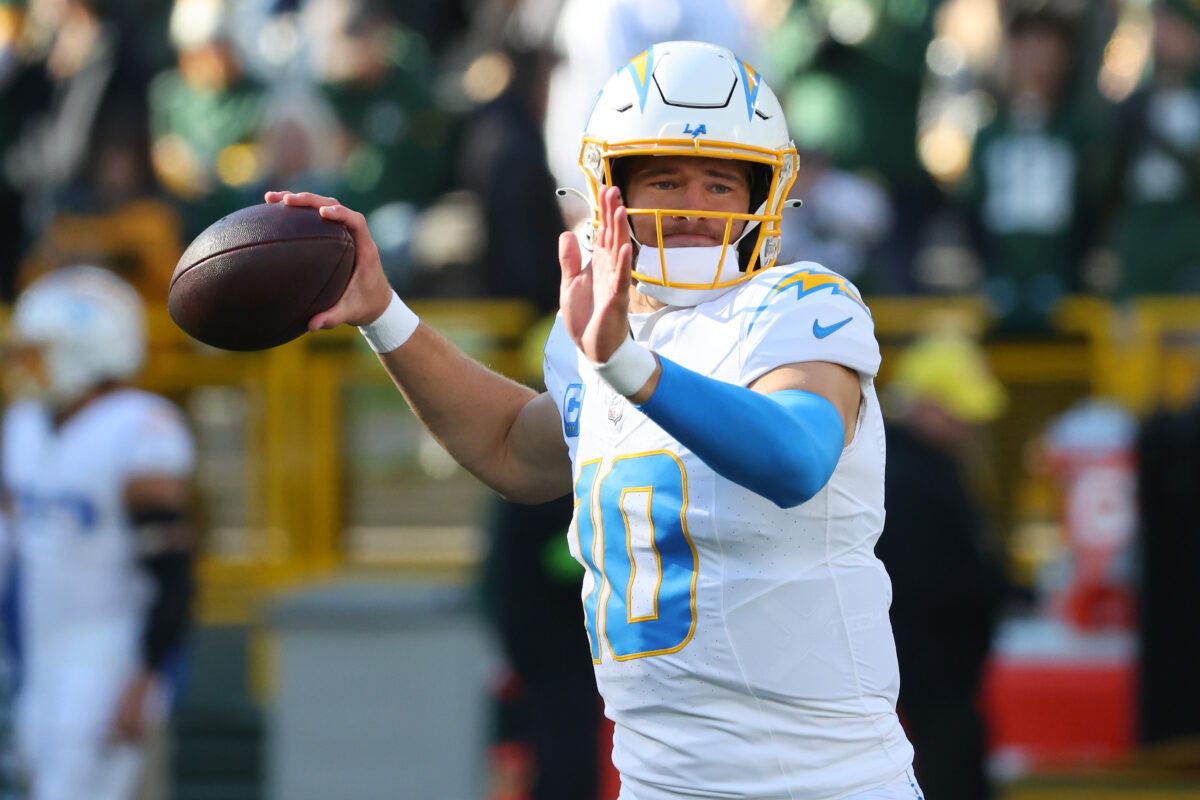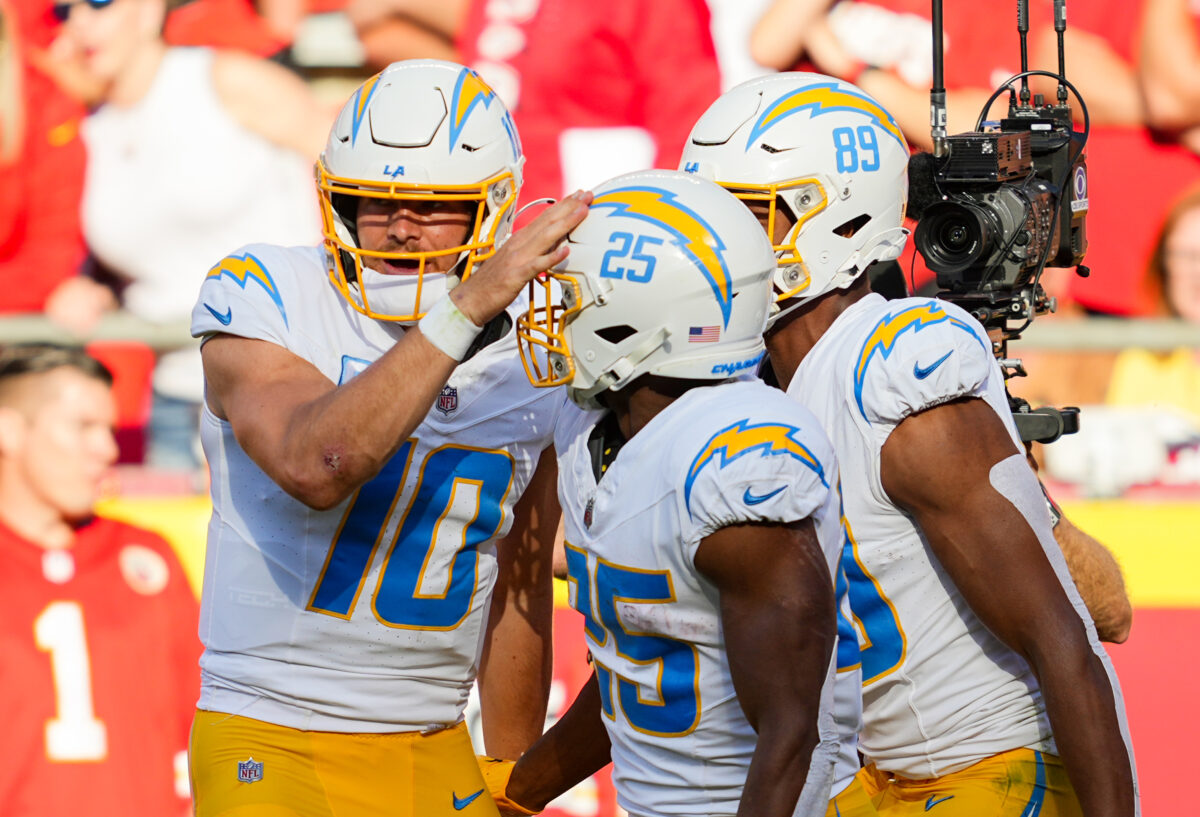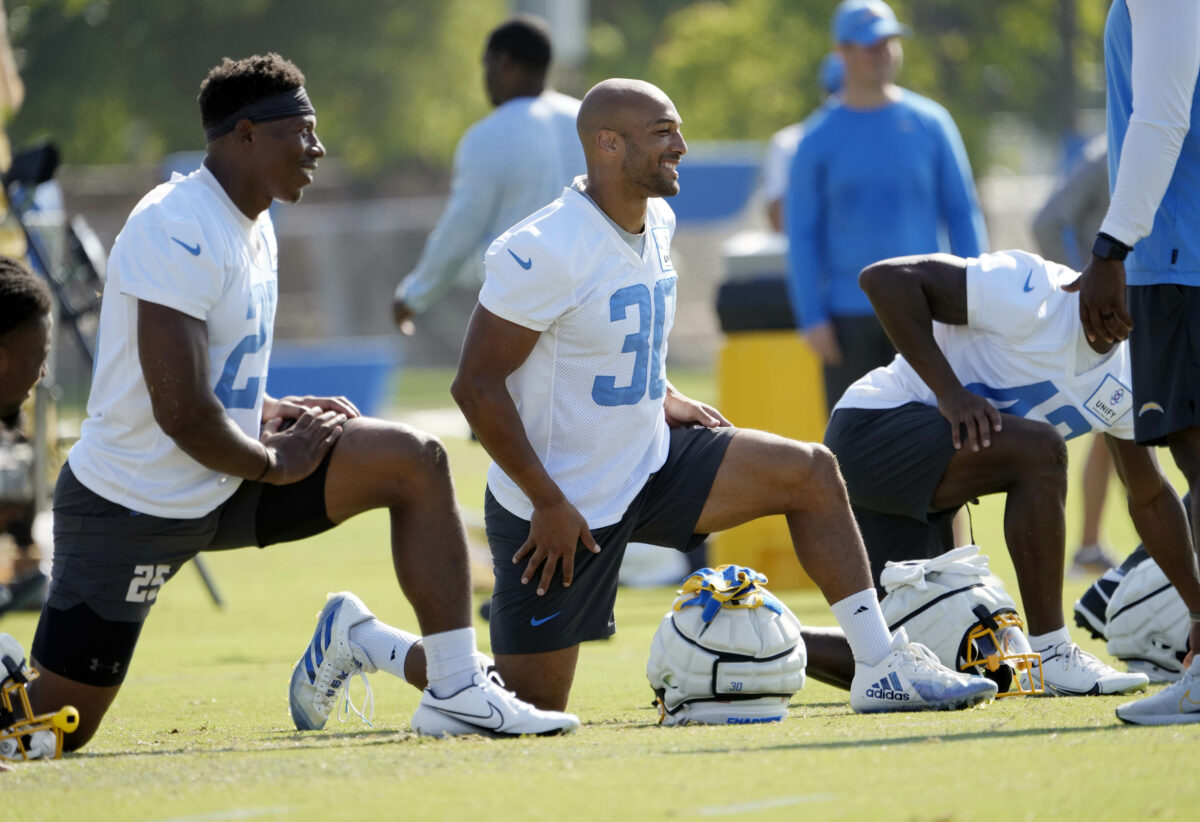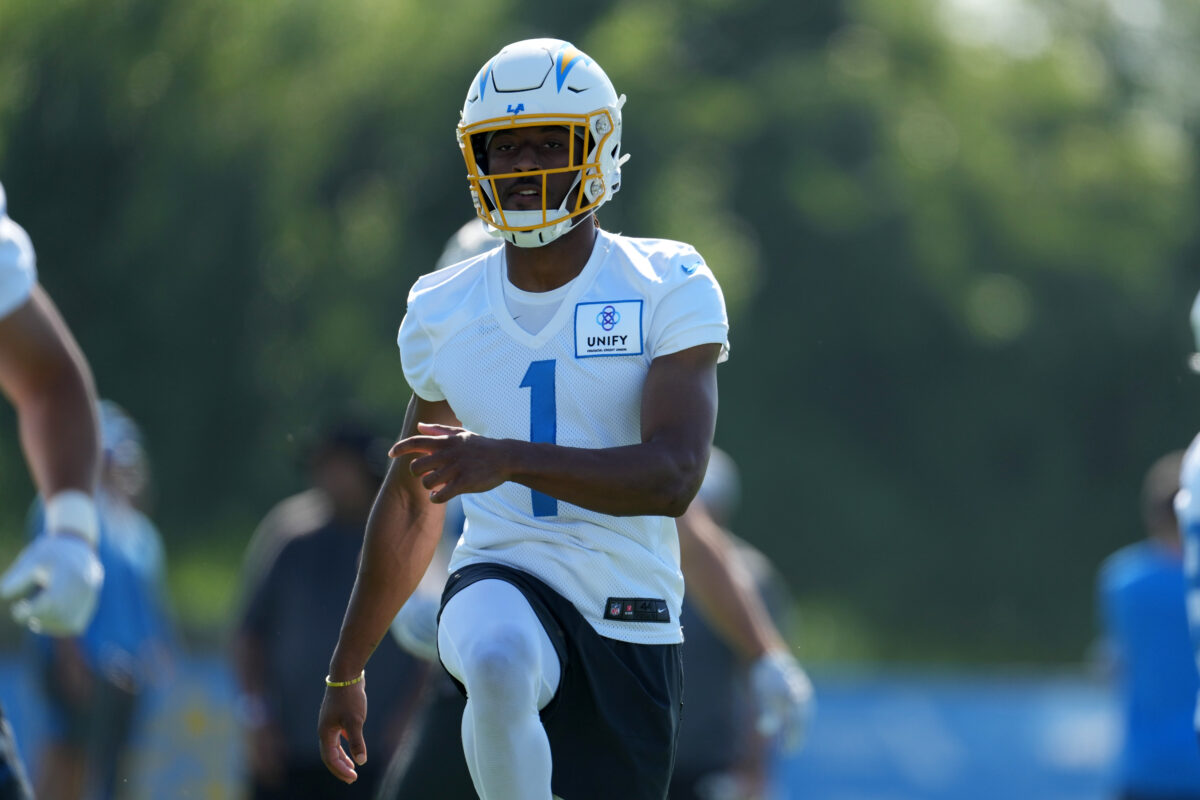Jim Harbaugh spotlighted improving the running game at his introductory press conference. In hopes of having his vision materialized, Harbaugh hired Greg Roman, a run offense specialist, to oversee the offense.
Roman believes that running the ball effectively will aid Justin Herbert’s play.
“Can you imagine Justin Herbert with a great running game?” Roman said, per ESPN’s Kris Rhim. “… We don’t know, but I can imagine what it might look like. So that’s kind of the vision.”
The Chargers have not had an efficient running game since LaDainian Tomlinson donned the blue and gold. Since 2008, they have finished outside the top 10 in rushing yards per game, most recently finishing 24th.
“I think in this league, you can really, really help dictate the defenses if you have a strong running attack,” Roman said. “If you really talk to most defensive coordinators in this league and got them off to the side when they’re playing a really good running team, they’re sweating a little bit. They’re sleeping a little less that week.”
During Roman’s four seasons as the Ravens’ offensive coordinator (2019-2022), they led the league in rushing yards per game (175.2). When he was Harbaugh’s OC with the 49ers from 2011 to 2014, they were second in the NFL in that time frame in rushing yards per game (139.3).
Roman had Colin Kaepernick and Lamar Jackson as his quarterbacks, and they’re known for their athletic prowesses and the ability to use their legs.
Herbert, on the other hand, is athletic enough to run. But he is more of a prominent passer, which has many wondering how Roman will balance a heavy run game and still let Herbert do his thing through the air.
“It’s going to be a little different,” Roman said. “I think you’re going to see probably a multiple running game. You’ll probably see the use of motions and shifting, and then you’ll see a pretty diverse passing game.
“… Right now, everybody’s got a blank slate of who we can be or what we can do. Could be anything right now, our principles and whatnot of what we do offensively won’t change, but how they come to life on the field will.”
While Roman isn’t known for his passing game, Marcus Brady, who was hired to be the team’s passing game coordinator, should help maximize the offense in that department.
“We’re trying to be great at running the ball, and we’re trying to be great at throwing the ball. We’re trying to be great at both all the time.”








